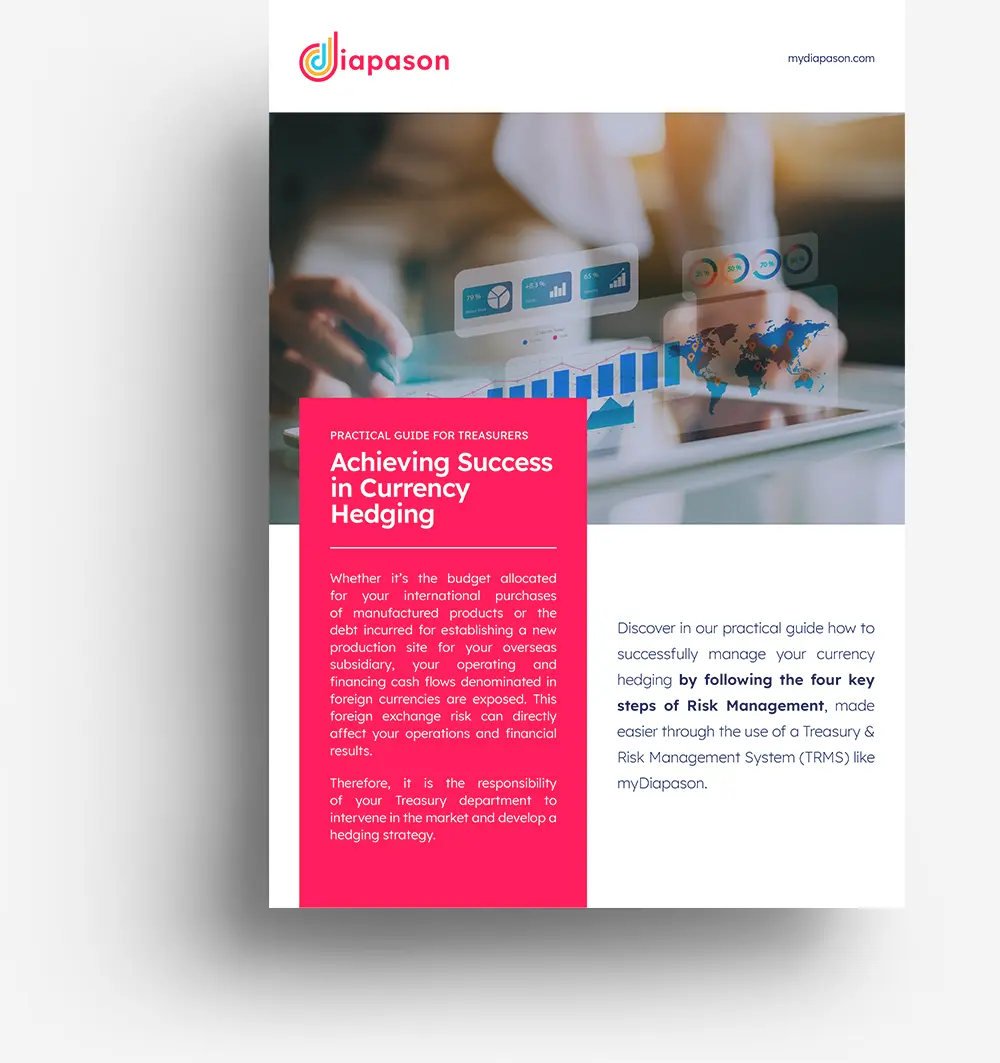
How to Manage Your Business Cash Flow: Best Practices
Cash flow management is essential for all businesses. It comprises several indicators that help monitor the company’s activities and financial health. Proper cash flow management requires a good understanding of cash flow fundamental. Discover our best practices in this guide.
Definition of Cash Flow Management
Managing cash flow encompasses all procedures for tracking, controlling and analyzing a company’s cash movements, including inflows and outflows. The challenge for all businesses is to balance the money spent against the money earned Effective cash flow management provides a clear understanding of a company’s financial situation. This allows financial directors and treasurers to manage potential risks better, often using treasury management software.
A company’s cash flow is defined by the liquid resources immediately available. The cash balance fluctuates between deficit and surplus depending on the cash inflows and outflows.
Why is Cash Flow Management Essential for a Business?
Good cash flow tracking allows businesses to anticipate liquidity needs, such as those caused by payment defaults. By maintaining an overview of your cash position, you can respond to unforeseen situations and minimize cash flow risks.
Business owners calculate their payroll costs and other expenses, consider the amount and timing of invoices and bills that need to be paid, and forecast their earnings expectations for the next three months, six months, and a year.
Implementing a cash flow statement maximizes your opportunities. If your revenue covers your total expenses during a specific period, you have reached the break-even point with your cash flow.
Effective financial flow management enables informed strategic decisions and the reallocation of cash surpluses to strategic investments or placements for business growth.
Step-by-Step Guide to Manage Cash Flow
Creating a successful cash flow tracking involves three steps:
- Define the categories of cash inflows and outflows
- Develop cash flow forecasts
- Record actual cash flows
Define the categories of cash inflows and outflows
The first step is to identify the different categories of cash inflows and outflows. Common cash inflows include:
- Loans from financial institutions
- Public aids and subsidies
- Client invoicing
- Personal contributions
- Investor contributions
Cash outflows cover various expenses such as:
- Loan repayments
- Taxes and levies (CFE, VAT, etc.)
- Operating expenses (energy, telephony, IT, etc.)
- Rent
- Personnel costs (salaries, bonuses)
- Suppliers and service providers
Each inflow and outflow is categorized for easy identification, offering a clearer understanding of cash movements. Precisely identifying all categories of cash receipts and payments is crucial to avoid unforeseen events.
Develop cash flow forecasts
The second step involves creating cash flow forecasts. Your tracking plan should include anticipated cash inflows and outflows.
Forecasting cash inflows helps set sales targets, using previous years’ revenue as valuable indicators. Cash inflows include customer invoices that need to be tracked for timely payment follow-ups.
Cash outflow forecasting requires more precision. All cash outflows should be based on monthly and yearly historical data. Predictable expenses include rent, taxes, and loan repayments.
Other expenses can be variable, such as payroll, energy bills, maintenance costs, and raw material purchases. From an accounting perspective, projections can be relatively accurate.
Move from forecast to actual
It is essential to track forecasts. Record actual cash inflows and outflows in your cash flow tracking dashboard, specifying categories, amounts, and transaction dates. Include outstanding invoices with due dates for easier tracking. Automating payment flows can simplify this process.
These three steps help anticipate the evolution of your company’s cash flow over several weeks or even months. Accurate accounting requires instant corrections to cash inflows and outflows for the best short-term cash flow visibility.
Key Indicators for Cash Flow Tracking in Accounting
To achieve accurate and straightforward cash flow tracking, certain accounting indicators must be considered.
Available cash
Available cash defines the liquid funds accessible to the company for optimal operation during its financial period.
Net cash burn rate
Net cash burn rate measures the difference between cash inflows and outflows over a monthly period, providing a precise cash flow status.
Working capital requirement (WCR)
Working capital requirement (WCR) is the total amount needed to finance the company’s operating cycle. It accounts for the cash flow delays due to customer payment terms and determines the minimum amount required during the operating cycle.
Accounts receivable and customer payment terms
Accounts receivable represent the amounts customers owe, while customer payment terms indicate the average days between a sale and customer payment.
Accounts payable and Supplier payment terms
Accounts payable (AP) refer to the money owed to suppliers and service providers, linked to the payment terms specified on invoices.
Financing costs
Financing costs encompass all financing operations, including billing fees, collection fees, overdraft charges, etc.
4 Ways to Improve Your Cash Flow:
Optimize your accounts receivable:
Speeding up the collection of receivables can significantly improve your cash flow. Implementing strategies such as offering early payment discounts, following up promptly on overdue invoices, and tightening credit terms for new customers can help ensure quicker payments. Additionally, using invoicing software can automate reminders and make it easier for customers to pay on time.
Manage your accounts payable efficiently:
Extend your payment terms with suppliers where possible without harming your relationships. This means negotiating longer payment terms to hold onto your cash longer. However, take advantage of any early payment discounts offered by suppliers if they are more beneficial than holding onto the cash. A well-managed accounts payable process helps you maintain good relationships with suppliers and can lead to better terms in the future.
Monitor and control your expenses:
Regularly review your expenses to identify areas where you can cut costs without compromising the quality of your products or services. This includes renegotiating contracts with suppliers, reducing unnecessary overhead costs, and implementing more efficient operational processes. Keep a close eye on your cash flow statement. Adjusting your budget as needed can prevent cash flow problems before they arise.
Build a cash reserve:
Setting aside a portion of your profits as a cash reserve can provide a buffer during lean periods or emergencies. This reserve can help you cover unexpected expenses or take advantage of new opportunities without disrupting your regular cash flow. Aim to save a percentage of your monthly profits until you have enough to cover at least three to six months of operating expenses.
Tools for Effective Cash Flow Tracking
Setting up a tracking dashboard requires efficient tools. Depending on your needs, various solutions are available to assist you daily.
Spreadsheet software (Excel or Sheets)
Spreadsheet software effectively records different cash flows with high precision. However, creating customized tracking models requires strong financial modeling skills. Training is available to gain proficiency in spreadsheet use, but this method remains time-consuming and prone to errors.
Cash flow management software
Alternatively, companies can use cash flow management software. Businesses have two architecture options for their Treasury Management System (TMS): On-Premise or SaaS (Software as a Service). On-Premise TMS is installed on the company’s servers, while SaaS TMS is online, accessible from any browser and computer, and shareable among multiple users.
Cash flow software offers several advantages:
- A comprehensive view of all cash flows
- Anticipation of financing needs and management of market and credit risks
- Secure payment processes
- Automated reporting
- Real-time cash flow status
Cash flow management software automates the treasurer’s daily tasks, allowing them to focus on other operational priorities.
Regular cash flow tracking provides a clear view of your short-term revenues and expenses, helping measure company performance and create action plans to maintain financial health.
About the Author
Valérie Lafaury, Chief Marketing Officer
Valérie is the Chief Marketing Officer (CMO) of Diapason, the solution that streamlines corporate treasury management. She crafts press releases, in-depth articles, and timely pieces on topics related to the treasurer’s profession. Her goal is to provide treasurers with useful and practical information to optimize their treasury management.







